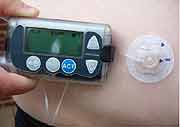Diabetes Belt Identified in Southern United States
A geographically congruent "diabetes belt" with high prevalence of diabetes exists in the United States, according to a study published online March 8 in the American Journal of Preventive Medicine.

TUESDAY, March 8 (HealthDay News) -- A geographically congruent "diabetes belt" with high prevalence of diabetes exists in the United States, according to a study published online March 8 in the American Journal of Preventive Medicine.
Lawrence E. Barker, Ph.D., of the U.S. Centers for Disease Control and Prevention in Atlanta, and colleagues examined data from CDC estimates of diabetes prevalence to identify a diabetes belt. They compared its residents and their risk factors to those of the rest of the country, and calculated the fraction of excess diabetes risk associated with living in the diabetes belt that is attributable to modifiable and nonmodifiable risk factors. The diabetes belt was defined as counties in close proximity with an estimated prevalence of diagnosed diabetes greater than or equal to 11 percent.
The researchers identified a diabetes belt composed of 644 counties in 15 states, mostly in the southeastern United States. Compared to people living in the rest of the country, people in the diabetes belt were more likely to be non-Hispanic African-American, live a sedentary lifestyle, and be obese. Modifiable risk factors, such as sedentary lifestyle and obesity, accounted for 30 percent of the excess risk; whereas, 37 percent was due to nonmodifiable risk factors, such as age, gender, race/ethnicity, and education.
"Nearly one-third of the difference in diabetes prevalence between the diabetes belt and the rest of the United States is associated with sedentary lifestyle and obesity. Culturally appropriate interventions aimed at decreasing obesity and sedentary lifestyle in counties within the diabetes belt should be considered," the authors write.
Related Content
- An Educational Tutorial: Weight Management
